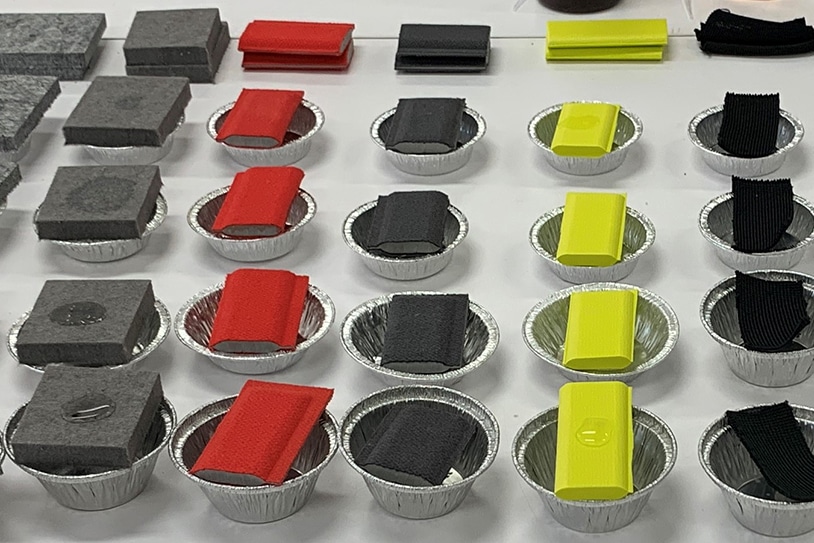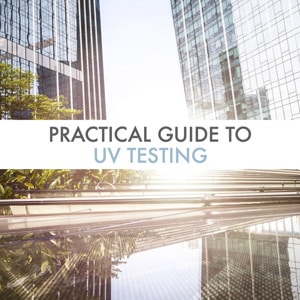BIFMA HCF 8.1
Health Care Furniture Design Guidelines For Cleanability
Micom offers test services to BIFMA HCF 8.1 as part of its Office Furniture Testing services. BIFMA HCF 8.1 Health Care Furniture Design – Guidelines for Cleanability – was initially published in October 2014, was reedited in 2017 and again in 2019. The purpose of this test method is to validate the resistance and compatibility of materials to different cleaning/disinfecting methods such as chemical, UV light and steam. This guideline does not address disinfection effectiveness; only the impact of the disinfection process on the furniture surfaces. The tests and acceptance levels in this guideline are based on a seven year life expectancy considering a onetime per day cleaning / disinfection process. This document is only a guideline, it applies to seating, tables, carts, storage and other furniture products used in healthcare establishment.
 Health care environments, due to the nature of the activities performed, present a high risk of microbial contaminations and diseases. Visitors, patients and staff are exposed to different infectious agents when using various contact surfaces such as chairs, furniture or any object touched by other users. The disinfection process is crucial in such environments in order to reduce cross contamination risks between users. Overall, five parameters are impacting the disinfection level: contact time, temperature, concentration, mechanical action and pH. The BIFMA HCF 8.1 purpose is to assess the deleterious impact of the disinfection processes and cleaners used on furniture surfaces.
Health care environments, due to the nature of the activities performed, present a high risk of microbial contaminations and diseases. Visitors, patients and staff are exposed to different infectious agents when using various contact surfaces such as chairs, furniture or any object touched by other users. The disinfection process is crucial in such environments in order to reduce cross contamination risks between users. Overall, five parameters are impacting the disinfection level: contact time, temperature, concentration, mechanical action and pH. The BIFMA HCF 8.1 purpose is to assess the deleterious impact of the disinfection processes and cleaners used on furniture surfaces.
The needs and challenges for health care environments are broad and cannot be addressed by a unique test method. The purpose of BIFMA HCF 8.1 is to provide guidelines on how tests should be executed and what should be the relevant acceptance criteria. Before starting any tests, the manufacturers should determine the requirements he is aiming for. Depending on the cleaning processes his product will be exposed to, they can use the products mentioned in the guideline. Our experts will be happy to help you determining your requirements. Click here to contact us.
This guideline can also be used by furniture specifiers working for health care establishments using their specific cleaning / disinfection processes.
BIFMA HCF 8.1 has four tests in order to evaluate the surface resistance to cleaning process encountered in health care environments. The following table shows the four available tests method and highlights to which surfaces they apply:
| Tests | Porous materials | Non-Porous materials | Woven textiles | Coated fabrics | |
| 6 | Screening of finishes to liquid cleaner resistance | x | |||
| 7 | Screening of Coated Fabrics to Liquid Cleaner Resistance | x | |||
| 8 | Resistance of Furniture to Steam Exposure | x | x | x | x |
| 9 | Resistance of Furniture to UV Lights | x | x | x | x |
BIFMA HCF 8.1 Tests outline
6 – Screening of finishes to liquid cleaner resistance
- The surface to be tested is covered by a cotton cloth saturated with the cleaner to be tested. The cotton is then covered with a watch glass for a soaking period. Finally, the sample is cleaned and dried for evaluation
- The proposed reagents are as follow1:
- Distilled water (control)
- Bleach
- Hydrogen Peroxide (HP)
- Quaternary Ammonium
- Alcohol – Isopropyl
- Phenolic
- Acceptance criteria: The surface should not present any color change, show signs of tackiness, softening, cracking or crazing. Maximum gloss, ASTM D523, is also part of the requirements. Surface gloss (ASTM D523) only allowed a certain % of change.
7 – Screening of Coated Fabrics to Liquid Cleaner Resistance
- Number of samples: 1 per cleaner
- Test method: 1 time per day and for a 5 working days period, the cleaner is applied on the sample and allowed to dry.
- Acceptance criteria: The surface should not present any signs of cracking, peeling, bubbling. A slight change in color or surface finish is acceptable. A moderate change in gloss is acceptable.
8 – Resistance of Furniture to Steam Exposure
- Test method: The test sample is laid flat for steam exposure (NEMA LD3, Section 3.5). The sample is then dried for evaluation.
- Acceptance criteria: A slight change in color or surface finish is acceptable
9 – Resistance of Furniture to UV Lights
- Test method: Half of the sample is covered for control. Sample is exposed to UVC light for 291 kJ/m2 or ASTM G155 cycle 11 with an irradiance of 1.1 u m2 at 420 nm.
- Test assessment: Initial and final L*a*b* readings should be established. A delta E of 2.0 or less is acceptable. A slight change in color or surface finish is also acceptable.
Other related test methods:
For additional related test methods please see; BIFMA Testing, UV Testing, Coating Testing, Accelerated Aging.
Note 1: Cleanings agents/disinfectants proposed in BIFMA HCF 8.1 guideline are commonly used in health care environments. Reagents are specified with typical concentration for testing of generic products. Other cleaners or concentrations could be evaluated if needed by manufacturers.
Practical UV Testing Guide
Sunlight exposure can have harmful impacts on carbon-based
materials such as coatings, polymers, textiles, and many others.
Learn more about our in-laboratory UV testing process in this guide.


